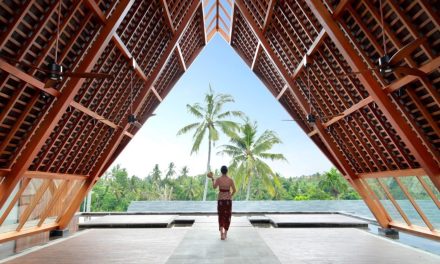Tourism villages might just be the next big thing for travelers in Bali.

Jatiluwih Village, famed for its UNESCO World Heritage Jatiluwih Rice Terraces, recently earned a prestigious spot among the best tourism villages worldwide. This achievement has inspired other communities to step up and showcase their unique cultures.
The Rise of Tourism Villages in Bali
When you think of Bali, you might picture the iconic temples and luxurious beaches. However, tourism villages are becoming trendier, like Penglipuran Village, which made headlines in 2022 for being one of the best tourism villages globally. I remember visiting Penglipuran last summer; the warmth of the locals and their rich traditions truly enriched my experience. Each corner of the village teemed with life, from craftspeople diligently working to the smell of local food wafting through the air.
Jatiluwih is poised for a significant surge in tourists following its recent recognition, tapping into the growing interest in immersive travel experiences that prioritize cultural connections.
Tourism Villages: A Sustainable Future
Wisnu Arimbawa, a leader in the tourism sector, emphasizes that tourism villages could redefine the future of travel in Bali by providing tourists with authentic and unforgettable experiences. He believes expanding tourism village programs will engage local communities, sharing the benefits of tourism more widely.
Arimbawa expressed his hopes to “share a little bit of the tourism ‘congestion’” by spreading the benefits of travel across various villages. He noted that there’s already a framework in place. For a village to thrive as a tourism destination, it must pass four key criteria:
- Distinctive Attractions: Every tourism village needs a unique draw. For Jatiluwih, it’s the stunning rice terraces and the subak irrigation system.
- Accessibility: The village must be reachable, with amenities for tourists, including overnight accommodations.
- Facilities: Essential services, such as local dining options and visitor infrastructure, are crucial.
- Management: An effective local management team is key to overseeing the growth and sustainability of the tourism experience.
With these elements in place, tourism experts like Arimbawa are optimistic for a surge in interest toward these village experiences in 2025.
Understanding Tourist Dynamics
A fascinating trend in Bali’s tourism is that these village experiences often attract more domestic tourists than international travelers. This can be attributed to several factors. Most international visitors flock to well-known hotspots and have less exposure to village collaborations with international travel agents.
Moreover, many tourism villages primarily market their offerings in Bahasa Indonesia and lack the resources for broader foreign language campaigns. Currently, Bali brims with 240 registered tourism villages, including notables like Penglipuran and Jatiluwih.
Other gems worth mentioning are Taro Tourism Village located in Tegallalang and Attack Tourism Village on Serangan Island. In Badung, the Munggu Tourism Village offers unique insights into local life, while the Bakas Village in Klungkung showcases the rich cultural heritage of the region.
Invitation to Explore
The beauty of tourism villages lies in their flexibility; a visit can range from just a couple of hours to a longer immersive stay. Jatiluwih Village, for instance, is perfect for an overnight adventure where guests can soak in the breathtaking sunrises and sunsets over the rice terraces. This extended visit allows for exploration beyond the typical tourist trail, delving into parts of the subak irrigation system that regular day-trippers might miss.
Similarly, staying a night at Penglipuran Village lets you savor al-fresco dining and enjoy peaceful evenings far from the hustle and bustle. By the end of your stay, you’ll not only take home stunning memories but also a deeper appreciation for the rich tapestry of Balinese culture.






